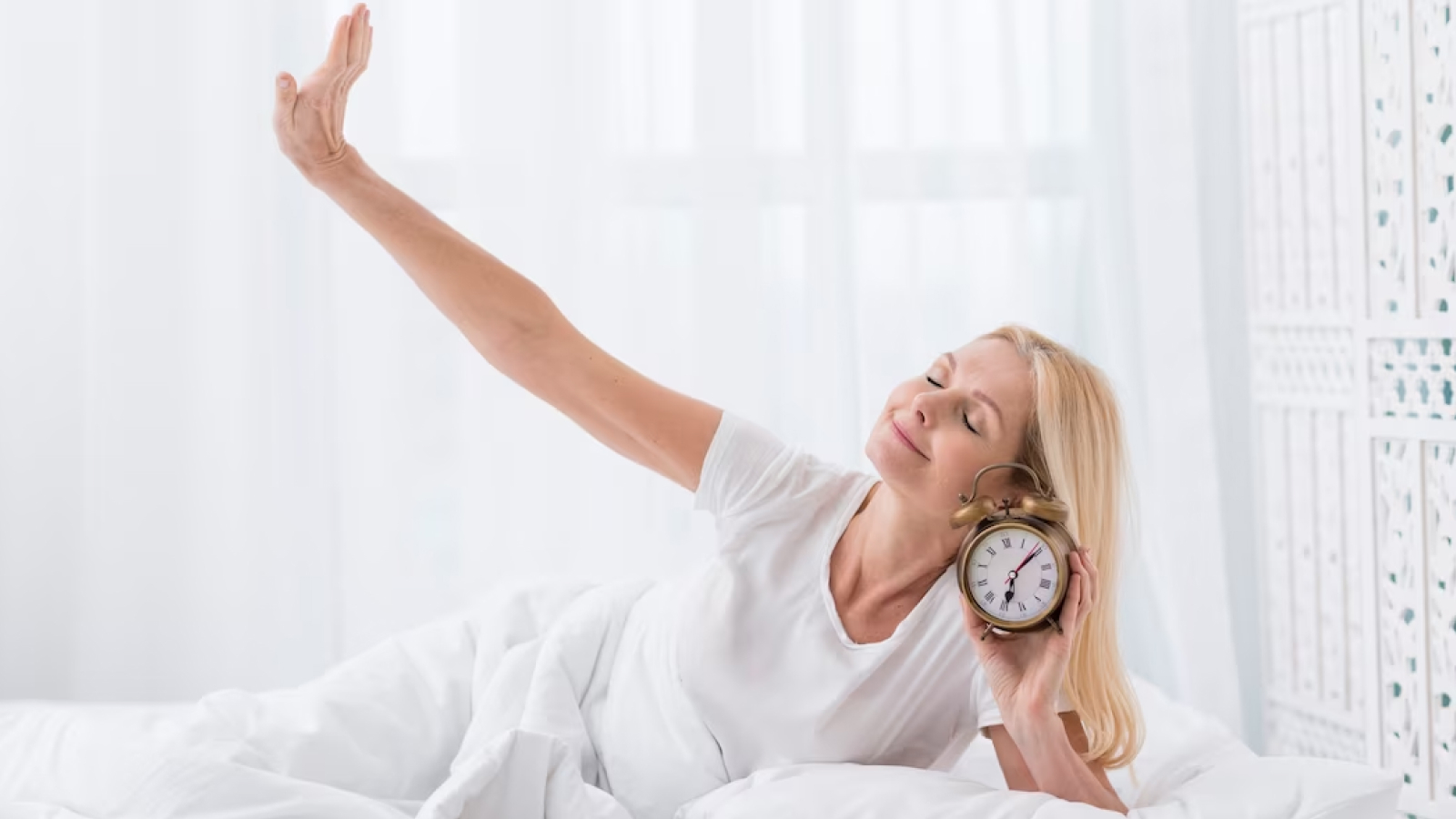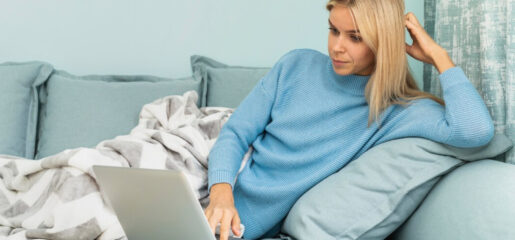
Daylight savings time is just around the corner, and while many see losing an hour of sleep as just a little nuisance, it can actually be a real problem for some people. Resetting your natural rhythm of sleep, even by an hour, can have a big impact on your body, and it can be hard to adjust to a new sleeping routine.
If you’re looking for tips on adjusting to daylight savings time, we’ve got you covered. Below, we’ll talk about some tips you can follow to get used to the schedule change more easily, including supplements that might help (including CBD).
Tip 1: Adjust Your Sleep Schedule Gradually Before Daylight Savings Time Begins
As we said, even though it’s only an hour difference, that can still make a big difference in your sleep schedule. This is especially true if you don’t have the luxury to sleep in and wake up according to your body’s rhythm instead of a set schedule.
What do we recommend? Try slowly adjusting your sleep schedule leading up to daylight savings time. For example, try changing when you go to sleep and when you wake up by 10 minutes at a time for a week, so by the end, you’re waking up and going to sleep according to your normal schedule after the time shift hits.
Tip 2: Avoid Using Alcohol As a Sleep Aid
It may be tempting to use alcohol as a sleep aid, especially if you’re trying to stay on schedule (which means going to sleep an hour early after the time change hits). Alcohol may help you fall asleep, but it’s terrible for helping you stay asleep and get good rest.
You should avoid drinking alcohol close to when you sleep as a general rule, but it’s a poor choice as a sleep aid.
Tip 3: Don’t Nap Too Much
There’s nothing wrong with taking a nap while you adjust to a new sleep cycle, but napping too much can be detrimental to your sleep. Experts generally recommend to avoid sleeping after 3pm, and to keep naps somewhat short (usually around 20 minutes).
Taking too many naps, or taking too long of naps, will end up making it hard to fall asleep and stay asleep at night, which will make it difficult to adjust to the time shift.
Tip 4: Avoid Caffeine Too Late in the Day
You may feel tempted to drink caffeine throughout the day if you’re drowsy. While caffeine is generally fine to enjoy, you need to be careful about not drinking it too late in the day. Generally, experts recommend that you stop drinking caffeine at least six hours before you plan to go to sleep.
In general, it’s a good rule of thumb to only drink coffee in the morning!
Tip 5: Get Extra Sun (at the Right Times)
Getting lights has a proven impact on your circadian rhythm. If you feel you’re struggling to fall asleep or wake up at your normal time after daylight savings time. Getting some extra sun or light (and voiding light at the right time) may be helpful in resetting your sleep routine. In particular, experts recommend:
- Getting exposed to bright light one hour after you generally wake up.
- Dimming lights (or turning them off) around two hours before you want to go to sleep.
Tip 6: Take Melatonin Close to Bedtime
Melatonin is a hormone your body produces that plays an important role in the human wake-sleep cycle. Generally, melatonin serves as a signal to your body that it’s time to sleep, so melatonin is naturally created when you experience darkness.
Melatonin is available as a supplement in most grocery stores, and research suggests that taking it can help manage sleep issues, including insomnia and even jet lag. If you’re having trouble falling asleep after the time shift, taking melatonin to help you fall asleep earlier could be helpful in resetting your sleep cycle.
Tip 7: Be Consistent with Your Sleep Routine
Regardless of how you decide to cope with daylight savings time, you need to make sure that your sleep routine is consistent. Wake up at roughly the same time and go to sleep at roughly the same time. Erratically staying up late or sleeping in can make it impossible to set a new sleep routine, which can impact your ability to get a quality night’s sleep.
Tip 8: Consider CBD
CBD is a cannabinoid naturally found in hemp, and it’s gained popularity over the past several years as a tool to manage all kinds of health challenges. Most commonly, CBD is used to help manage anxiety and certain kinds of chronic pain, but it’s recently gained traction as a potential sleep aid.
The research into CBD and its impact on sleep is still pretty new, but CBD and other cannabinoids have been shown to positively affect adult sleep habits, especially when combined with other cannabinoids.
You should always talk with your doctor before trying a CBD product (it can interact with certain prescription medications), but it may be the tool you’ve been looking for to help you adjust to daylight savings time.
How to Use CBD to Adjust to Daylight Savings Time
If you’re thinking about using CBD to help adjust to the time shift, we’ve got a few tips for you to follow.
Consider the CBD Delivery Method
Not all CBD products get CBD into your bloodstream the same way. Ingestible products (like CBD capsules) or transdermal patches need time to get the CBD into your bloodstream. If you’re trying to use CBD to fall asleep after daylight savings time, it will be important to take CBD at the right time for the best effects.
In general, the following times are how long it takes for CBD to reach your bloodstream:
- Inhaling: 15 minutes
- Ingesting: 30-45 minutes
- Transdermal patch: 45+ minutes
If you are looking for something to help you relax and fall asleep at a new earlier bedtime, then consider trying something like the PhenoPen, since it delivers CBD into your bloodstream the fastest.
Take It Consistently
Some people will feel some kind of sensation as soon as they take CBD for the first time, while others may not feel anything at all. It can take several weeks for CBD to start providing the best relief, so don’t stop regularly taking it just because you don’t feel something within the first few days.
Use Pure, Safe Products with 3rd Party Lab Tests
Regardless of how or how long you use a product, if it isn’t pure, you may never get the full benefits of CBD. Since CBD is largely unregulated, the only way to know that a CBD product is as potent and as pure as a brand claims is to take a look at their Certificate of Analysis.
It’s the only way to know for sure that what you’re taking is safe and contains as much CBD as advertised.
Daylight Savings and PhenoLife
Daylight savings can be a chore to adjust to, but now you have the tools to be able to easily cope. You can:
- Start adjusting your sleep schedule ahead of time
- Make sure not to drink alcohol as a sleep aid
- Don’t nap too late or for too long
- Avoid afternoon and evening caffeine
- Get some extra sun (especially shortly after you wake up)
- Take melatonin before you go to sleep
- Maintain a consistent sleep routine
- Trying using CBD
If you’re thinking about trying CBD and have questions, we’d love to help! The experts at PhenoLife can talk to you about the best way to take CBD (or even a specific CBD formula that may target your sleep issues more precisely).
Ready to start shopping for CBD on your own? You can see our store here and start taking a look at the pure, safe CBD products we offer.

